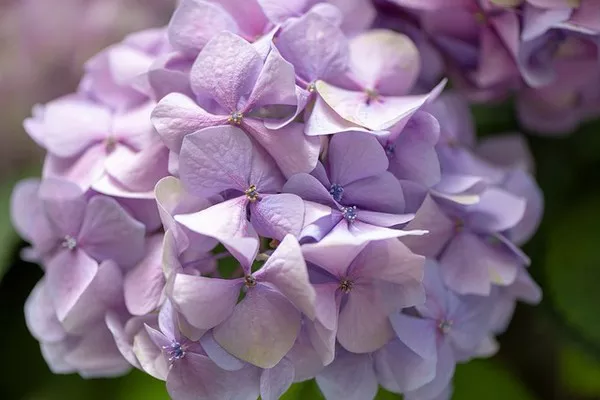Hydrangeas are beloved flowering plants known for their stunning blooms and vibrant colors. With their large, showy clusters of flowers, hydrangeas add a touch of elegance and charm to any garden or floral arrangement. These versatile flowers come in various shades of pink, blue, purple, and white, making them a popular choice for weddings, events, and home decor. However, once cut, hydrangea blooms can quickly wilt if not properly preserved. In this article, we will explore the factors affecting the preservation of hydrangea flowers and provide effective methods and tips for ensuring their longevity.
Factors Affecting Preservation
Several factors contribute to the preservation effect of hydrangea flowers:
1. Hydration: Hydrangeas, as the name suggests, require ample water to maintain their freshness. Lack of hydration can lead to wilting and browning of the blooms.
2. Temperature: Hydrangeas are sensitive to extreme temperatures. Exposure to high temperatures can accelerate wilting, while cold temperatures can damage the blooms.
3. Humidity: Hydrangeas thrive in humid environments. Low humidity levels can cause the flowers to dry out quickly.
4. Handling: Rough handling during harvesting, transportation, or arranging can damage the delicate petals of hydrangea blooms, leading to premature wilting.
5. Variety: Different varieties of hydrangeas have varying levels of resilience and longevity once cut. Some varieties may naturally last longer than others.
Understanding these factors is essential for effectively preserving hydrangea flowers and extending their beauty.
Methods of Preserving Hydrangea Flowers
Preserving hydrangea flowers requires careful attention to detail and proper techniques. Here are some methods commonly used to maintain the freshness of hydrangea blooms:
1. Water Method:
The water method is one of the simplest and most effective ways to preserve hydrangea flowers. Start by cutting the stems at a 45-degree angle and removing any foliage that will be submerged in water. Place the cut stems in a vase filled with lukewarm water and change the water every two days to prevent bacterial growth. Adding floral preservative to the water can also help prolong the blooms.
2. Drying:
Drying hydrangea blooms is a popular method for preserving them for long-term use in crafts and decor. To dry hydrangeas, cut the stems at their peak and remove any leaves. Hang the blooms upside down in a cool, dark, and well-ventilated area for several weeks until they are completely dry. Once dried, hydrangea flowers will retain their shape and color for months or even years.
3. Glycerin Method:
Glycerin is a natural substance that can be used to preserve the color and texture of hydrangea blooms. Mix one part glycerin with two parts hot water and pour the solution into a container. Cut the hydrangea stems at an angle and place them in the glycerin solution. Allow the flowers to sit in the solution for several days until they have absorbed the glycerin. Glycerin-preserved hydrangeas will retain their softness and color for an extended period.
4. Silica Gel Method:
Silica gel is a desiccant that absorbs moisture and preserves the shape and color of flowers. Fill a container with silica gel and bury the hydrangea blooms in the gel, making sure they are fully covered. Seal the container and leave it undisturbed for several days until the flowers are completely dry. Carefully remove the dried blooms from the silica gel, brushing off any excess powder.
5. Freezing:
Freezing hydrangea blooms is another method for preserving their beauty. Cut the stems and remove any leaves, then place the blooms in an airtight container or freezer bag. Seal the container and place it in the freezer. Frozen hydrangeas can be used in floral arrangements or crafts once thawed.
Tips for Preserving Hydrangea Flowers
In addition to the preservation methods mentioned above, here are some additional tips for prolonging the life of hydrangea flowers:
1. Harvest at the Right Time: Cut hydrangea blooms early in the morning or late in the evening when the weather is cool. Choose blooms that are fully open but not overly mature.
2. Use Clean Tools: Always use clean, sharp scissors or pruning shears to cut hydrangea stems. Dirty or dull tools can introduce bacteria and cause the stems to become blocked, preventing water uptake.
3. Conditioning: Before arranging hydrangea blooms, trim the stems at an angle and place them in a bucket of water for several hours to allow them to hydrate fully.
4. Avoid Direct Sunlight: Keep hydrangea arrangements away from direct sunlight, as it can cause the blooms to wilt prematurely.
5. Mist the Blooms: Lightly misting hydrangea blooms with water can help maintain their freshness and prevent them from drying out.
By following these methods and tips, you can enjoy the beauty of hydrangea flowers for an extended period, whether in fresh arrangements or preserved for future use.
Conclusion
Hydrangea flowers are cherished for their exquisite beauty and versatility in floral arrangements. Proper preservation techniques are essential for ensuring that hydrangea blooms remain vibrant and fresh for as long as possible. By understanding the factors affecting preservation, employing effective methods, and following helpful tips, you can enjoy the enduring elegance of hydrangeas in your home or special events. Whether dried, preserved, or freshly cut, hydrangea flowers continue to captivate with their timeless charm and allure.


